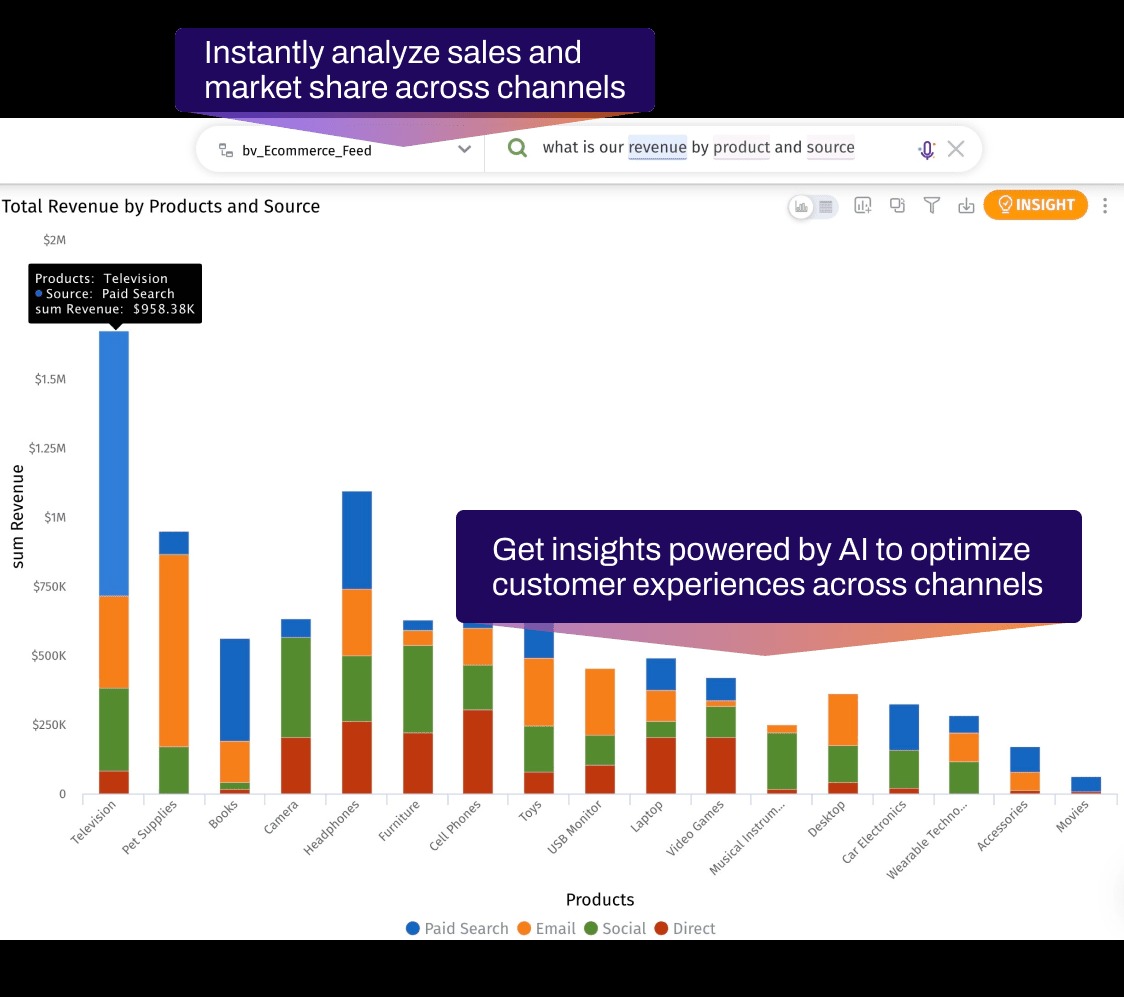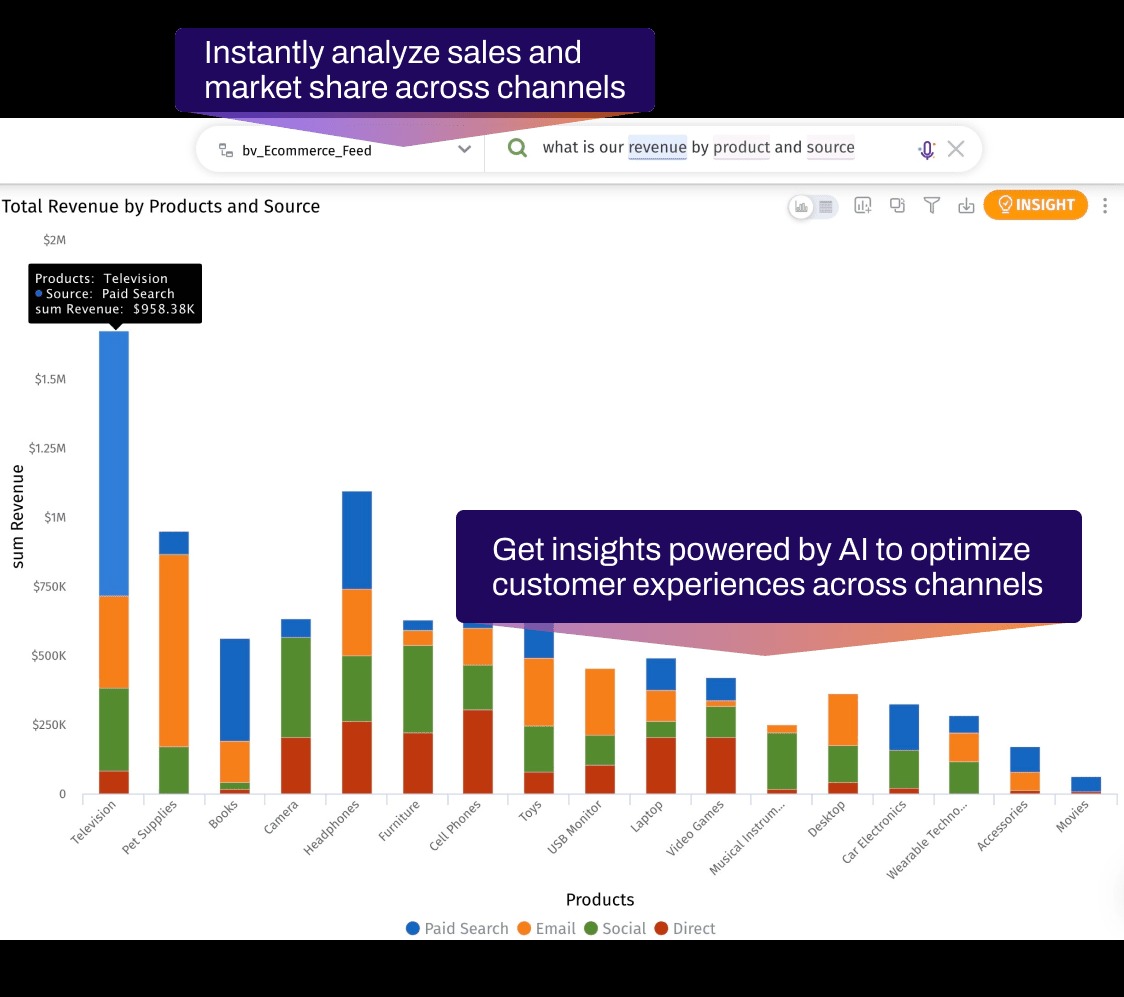The Power of Omnichannel Analysis: A Comprehensive Approach to Customer Insights
 Tellius Usa
Tellius Usa
In today's interconnected world, customers engage with businesses through multiple touchpoints, from online stores and social media to brick-and-mortar locations and mobile apps. As customer journeys become increasingly complex, businesses face the challenge of understanding and optimizing these interactions to deliver seamless and personalized experiences. This is where omnichannel analysis comes into play. By integrating data across various channels, omnichannel analysis helps businesses gain a 360-degree view of customer behavior, enabling more informed decision-making and enhanced customer satisfaction.
What Is Omnichannel Analysis?
Omnichannel analysis refers to the comprehensive examination of customer interactions across all available channels—both online and offline. It involves collecting and analyzing data from websites, social media platforms, email campaigns, physical stores, mobile apps, and customer service interactions. The goal is to understand how customers move between different touchpoints and what factors influence their buying decisions, loyalty, and overall experience.
Unlike traditional multichannel approaches that treat each channel in isolation, omnichannel analysis emphasizes integration. It aims to break down silos and provide a unified view of the customer journey, revealing patterns and trends that would otherwise be missed when analyzing each channel separately.
Why Is Omnichannel Analysis Important?
As consumers increasingly demand seamless experiences across multiple channels, businesses need to adapt by understanding how their customers interact with various touchpoints. Omnichannel analysis offers a number of key benefits, including:

Improved Customer Experience: By understanding the entire customer journey, businesses can identify pain points and optimize interactions across channels. Whether a customer starts on a mobile app and completes a purchase in-store or switches between email and social media, omnichannel analysis provides insights into where improvements can be made to enhance their experience.
Personalized Marketing: With a unified view of customer behavior, businesses can deliver more targeted and relevant marketing messages. For example, if a customer frequently interacts with a brand's social media but rarely makes purchases on their website, personalized promotions or offers can be tailored specifically to encourage online conversions.
Better Decision-Making: Access to real-time, comprehensive data across all channels allows businesses to make more informed decisions. Whether it's determining the effectiveness of marketing campaigns or identifying the best channels for customer engagement, omnichannel analysis provides actionable insights to guide strategy.
Increased Sales and Retention: A seamless, personalized customer experience drives loyalty and repeat purchases. Omnichannel analysis helps businesses identify trends in purchasing behavior, allowing them to upsell and cross-sell more effectively. Furthermore, by addressing customer pain points and optimizing the experience across all channels, companies can boost customer retention and reduce churn.
Key Components of Omnichannel Analysis
To effectively implement omnichannel analysis, businesses need to focus on several key components:
Data Integration: The cornerstone of omnichannel analysis is the ability to collect and integrate data from diverse sources, such as websites, mobile apps, social media, customer support channels, and in-store systems. A comprehensive data integration strategy ensures that all touchpoints are accounted for and analyzed collectively.
Customer Journey Mapping: Visualizing the customer journey is essential for understanding how customers move between channels. Customer journey maps highlight the various touchpoints and stages of the buying process, enabling businesses to identify opportunities for improvement.
Cross-Channel Attribution: One of the biggest challenges in omnichannel analysis is accurately attributing customer actions to specific channels. Cross-channel attribution helps businesses determine which channels are driving conversions, so they can allocate resources more effectively. For example, while a customer may complete a purchase in-store, omnichannel analysis might reveal that social media or email campaigns played a significant role in influencing that decision.
Real-Time Analytics: Timely insights are crucial for staying competitive in fast-paced industries. Real-time analytics allow businesses to monitor customer interactions as they happen, enabling quick responses to emerging trends or issues.
Real-World Applications of Omnichannel Analysis
Many industries are leveraging omnichannel analysis to gain a competitive edge. In retail, for example, brands are using omnichannel insights to provide customers with a consistent shopping experience across online and offline channels. From personalized product recommendations to buy-online-pick-up-in-store (BOPIS) options, businesses are creating seamless, integrated experiences that cater to modern consumer expectations.
In financial services, banks are using omnichannel analysis to understand how customers interact with their digital platforms, call centers, and physical branches. By analyzing these interactions, they can tailor services, improve user interfaces, and enhance customer support.
Omnichannel analysis is a powerful tool that enables businesses to understand and optimize the increasingly complex customer journey. By integrating data from multiple touchpoints, businesses can enhance customer experiences, deliver personalized marketing, and make data-driven decisions. In an age where customer expectations are higher than ever, omnichannel analysis provides the insights needed to stay competitive, improve loyalty, and drive growth.
Subscribe to my newsletter
Read articles from Tellius Usa directly inside your inbox. Subscribe to the newsletter, and don't miss out.
Written by
